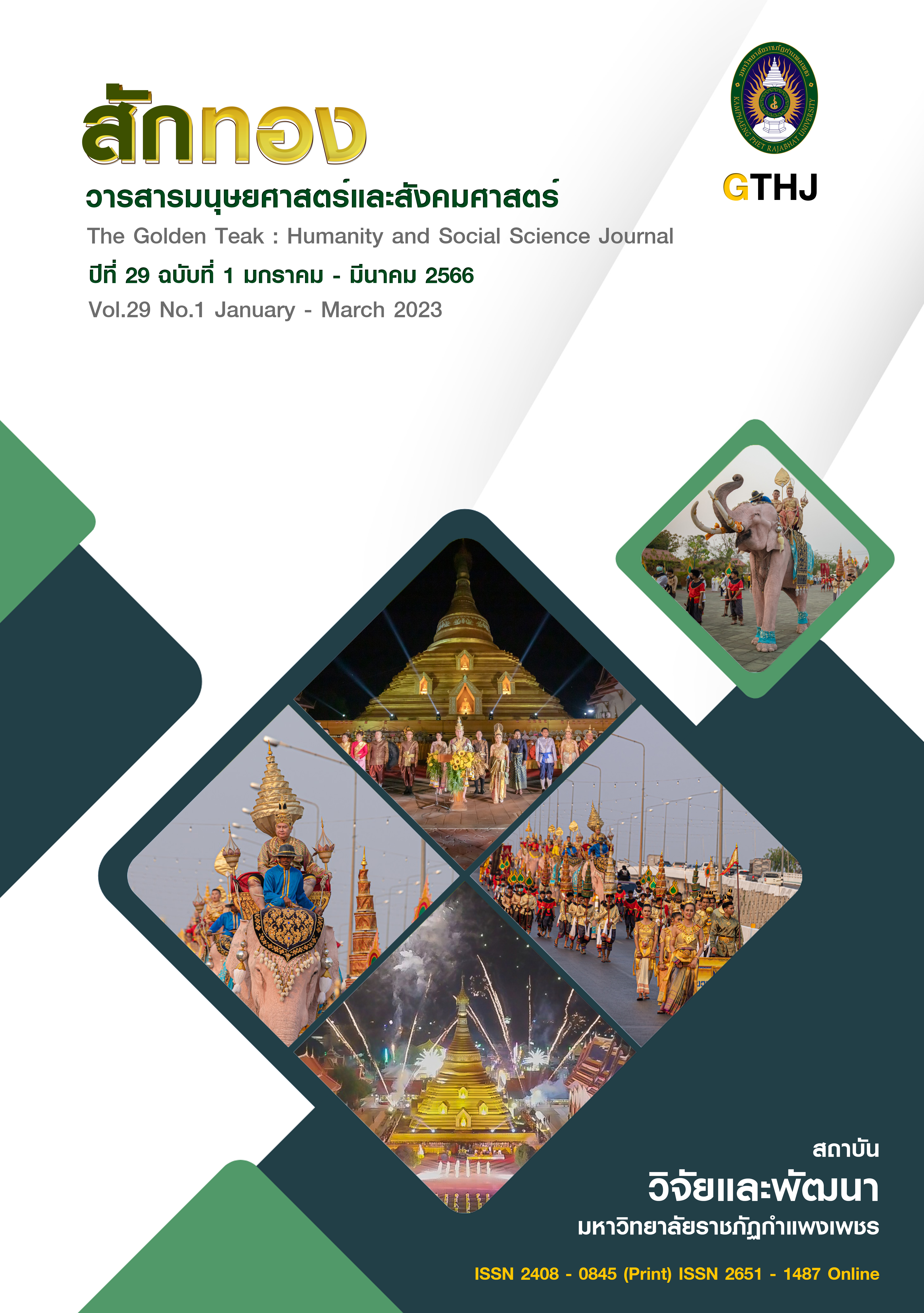Conflict Management of Nakhon Si Thammarat Provincial Administration Organization’s Employees
Main Article Content
Abstract
The objectives of this research were to 1) explore the cause of conflicts of Nakhon Si Thammarat Provincial Administration Organization’s employees, 2) study conflict management models of Nakhon Si Thammarat Provincial Administration Organization’s employees, and 3) investigate the relationship between cause and conflict management models of Nakhon Si Thammarat Provincial Administration Organization’s employees. The participants of the research were 134 employees at Nakhon Si Thammarat Provincial Administration Organization by questionnaire was used as a tool to collect the data. The statistics used to analyze the data were mean, standard deviation and Pearson Product moment correlation Coefficient. The results of the study revealed that 1) the overall results of cause of conflicts of Nakhon Si Thammarat Provincial Administration Organization’s employees was at low level ( = 2.15, S.D.=1.09). Value and belief got the highest mean, 2) the overall result of conflict management models of Nakhon Si Thammarat Provincial Administration Organization’s employees, compromising got the highest mean (
= 3.87, S.D. =0.82), and 3) the relationship between cause and conflict management models of Nakhon Si Thammarat Provincial Administration Organization’s employees was a positive correlation at moderate level statistically significant at .01.
Article Details

This work is licensed under a Creative Commons Attribution-NonCommercial-NoDerivatives 4.0 International License.
บทความที่ได้รับการตีพิมพ์เป็นลิขสิทธิ์ของวารสาร สักทอง : วารสารมนุษยศาสตร์และสังคมศาสตร์ สถาบันวิจัยและพัฒนา มหาวิทยาลับราชภัฏกำแพงเพชร
ข้อคิดเห็นใดๆ ที่ปรากฎในวารสารเป็นวรรณกรรมของผู้เขียนโดยเฉพาะ ซึ่งมหาวิทยาลัยราชภัฏกำแพงเพชรและบรรณาธิการไม่จำเป็นต้องเห็นด้วย
References
st informant. (2020, January 20). Nakhon Si Thammarat Provincial Administration Organization’s employee. Interview. [In Thai]
nd informant. (2020, January 20). Nakhon Si Thammarat Provincial Administration Organization’s employee. Interview. [In Thai]
Banchun, K. (2017). Human Relations in the Organization. Bangkok : SE-EDUCATION. [In Thai]
Chummung., K., Tangchitsomkit, W. & Labmala, S. (2018). Conflict Management of School Administrators under South Bangkok School Group. RMUTP Research journal humanities and social, 3(1), 34-45. [In Thai]
Kanchanawasi, S. (2001). Choosing the Right Statistics for Research. (4 th ed.). Bangkok : Bunsirikanphim. [In Thai]
Khaklom, U. (2017). Conflict Management. Nakhonsithammarat : Nakhon Si Thammarat Rajabhat University. [In Thai]
Leekpai, P. & Fuakong, T. (2021). Conflict Management by Government Officials in Subdistrict Administrative Organizations in Trang Province. Local Administration Journal, 14(1), 53-68. [In Thai]
Leekpai, P. (2021). Conflict Management from performing work of Teachers in Trang Province. King Prajadhipok's Institute Journal, 19(1), 93-113. [In Thai]
Phutachot, N. (2014). Organizational Behavior. (2 nd ed.). Bangkok : Chulalongkorn University. [In Thai]
Pongwichai, S. (2007). The statistical analysis by computer. (2 nd ed.). Bangkok : Chulalongkorn University Press. [In Thai]
Prommapun, B. (2020). Interpreting Techniques for Using Parametric and Nonparametric Statistics in Social Sciences Research. Electronic Journal of Open and Distance Innovative Learning, 10(1), 1-11. [In Thai]
Robbins, S.P. (2010). Organizational Behaviour. America : n.p. [In Thai]
Sereerat, S. (2006). Marketing Research. Bangkok : Diamond in Business World. [In Thai]
Wisailaphon, S. (1997). Conflict Management for Creativity. (2 nd ed.). Bangkok : Takiang. [In Thai]
Witthayaudom, W. (2008). Organizational Behavior. (4 th ed.). Bangkok : Theerafilm & Scitex. [In Thai]
Witthayaudom, W. (2012). Conflict Management in Organizations. Bangkok : Thanaratkanphim. [In Thai]
Wonganuttararot, P. (2010). Psychology of Personnel Management. Bangkok : Phimdee. [In Thai]


